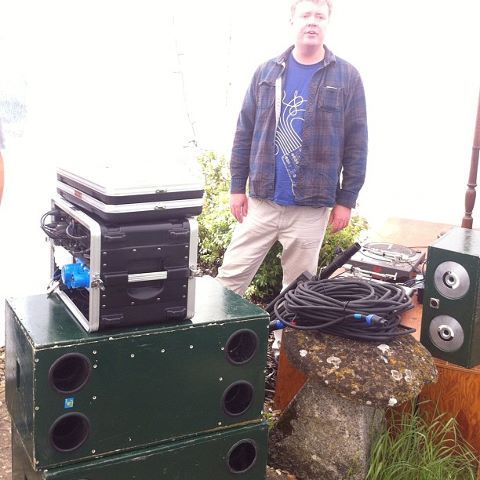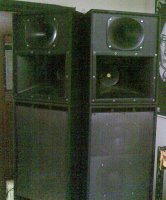- Posts: 6
- Thank you received: 0
EQ and speaker response
- dusty bin
-
 Topic Author
Topic Author
- Offline
- New Member
-

I do have question to throw in the mix though.
I have been wondering about applying eq in a system by simply using manufacturers frequency response plots.
Could i compensate for the response of a say a mid range driver by studying the response curve and adding cut/boost using a parametric equalizer or something similar?
so, if for example the response of my mid driver had a 1db increase around the 500hz range and i wished to flatten it out, would it be common practice to reduce the 500hz band on my equalizer by 1db to compensate?
or am i getting it all the wrong way around?
[img]smileys/smiley5.gif[/img]
Please Log in or Create an account to join the conversation.
- sks01
-

- Offline
- Premium Member
-

- Posts: 154
- Thank you received: 0
do it for the love of the music
Please Log in or Create an account to join the conversation.
- jsg
-

- Offline
- Elite Member
-

- Posts: 236
- Thank you received: 0
Also, EQ won't always give you the exact shape you expect (but a digital speaker controller might be able to correct for that or even better display a graph of the EQ curve you're actually getting).
EQ can also mess up the phase response and group delay. This can be a problem with bass. I won't use auto-EQ with bass because it isn't taking into account group delay issues which I care about.
Ars est celare artem
Please Log in or Create an account to join the conversation.
- dusty bin
-
 Topic Author
Topic Author
- Offline
- New Member
-

- Posts: 6
- Thank you received: 0
jsg wrote:
<FONT style=": #000000">In principal you can do this. But there are practical problems. The frequency response will change if you're listening off the centre line from the speaker and reflections and interferenace from other speakers in the stack will all have an effect. And that's if you trust the manufacturer's graph in the first place.
<div></div>
<div></div>Also, EQ won't always give you the exact shape you expect (but a digital speaker controller might be able to correct for that or even better display a graph of the EQ curve you're actually getting).
<div></div>
<div></div>EQ can also mess up the phase response and group delay. This can be a problem with bass. I won't use auto-EQ with bass because it isn't taking into account group delay issues which I care about.
<div></div>
<div></div></font>
thanks for your replies. normally i run the system without any eq at all as it's an area i know little about, but i can't help thinking that i may be able to make improvements using eq.
i have a bss 388 digital processor running in 4 way stereo for the foh and use 24(L-R) slopes.
when i study the bss display there appears to be a reduction in gain where the two slopes meet, standard for filters i guess, so is it also good practice to boost these area's that naturally slope off due to filtering?
many thanks again for your advice on this.
[img]smileys/smiley10.gif[/img]
Please Log in or Create an account to join the conversation.
- jsg
-

- Offline
- Elite Member
-

- Posts: 236
- Thank you received: 0
The two graphs (woofer and tweeter) will dip near the crossover point. But of course *both* drivers are making a significant contribution at those frequencies. With Linkwitz-Riley alignment, they will add in phase to acheive a flat sum response. But certain things need to be true for this to work i.e.
- Woofer and tweeter at same level (with differences in sensitivity compensated at the amps or crossover unit)
- Woofer and tweeter close together and time-aligned (or time alignment compensated in crossover unit)
- Woofer and tweeter have good group-delay and amplitude responses near the crossover frequency.
That last one means in practice that you need plenty of overlap in the drive units' usable ranges before a crossover will behave as the theory predicts. Doesn't mean the theory is wrong, or useless. Just meansthe pre-requisites to a theory are as important as its predictions.
Edit: fix apostrophe abuse
Edit: here's some Linwitz-Riley fun reading material : www.rane.com/note160.html Edited by: jsg
Ars est celare artem
Please Log in or Create an account to join the conversation.
- danger noise
-

- Offline
- New Member
-

- Posts: 12
- Thank you received: 0
Edited by: danger noise
Please Log in or Create an account to join the conversation.
- dusty bin
-
 Topic Author
Topic Author
- Offline
- New Member
-

- Posts: 6
- Thank you received: 0
so in summary a Linkwitz-Riley alignment will automatically use phase to add gain at the crossover points - provided i have set my sensitivity up for each band correctly, time aligned my drivers correctly and spent lots of money on decent speakers?
*nips off to read rane note*
[img]smileys/smiley1.gif[/img]
Please Log in or Create an account to join the conversation.
- guest
-

- Visitor
-

In some cases you may have a big "bass to mid tops ratio".. i.e. more SPL at the bass end, so in effect the crossover frequency is higher than would be indecated by the LMS.
For example, I might set my LMS to crossover from 12 HD15s to 4 mid at around 140hz, but the actual acoustic crossover will be higher than this, due to the ratio of bass to mid.
Please Log in or Create an account to join the conversation.
- subsoniks
-

- Offline
- Junior Member
-

- Posts: 20
- Thank you received: 0
Please Log in or Create an account to join the conversation.
- jsg
-

- Offline
- Elite Member
-

- Posts: 236
- Thank you received: 0
Adambomb wrote:
I think I'm right in saying you also have to take into account the relative outputs of the different cabs (I guess this is what JSG is saying about being at the same "level").
Yups
Ars est celare artem
Please Log in or Create an account to join the conversation.